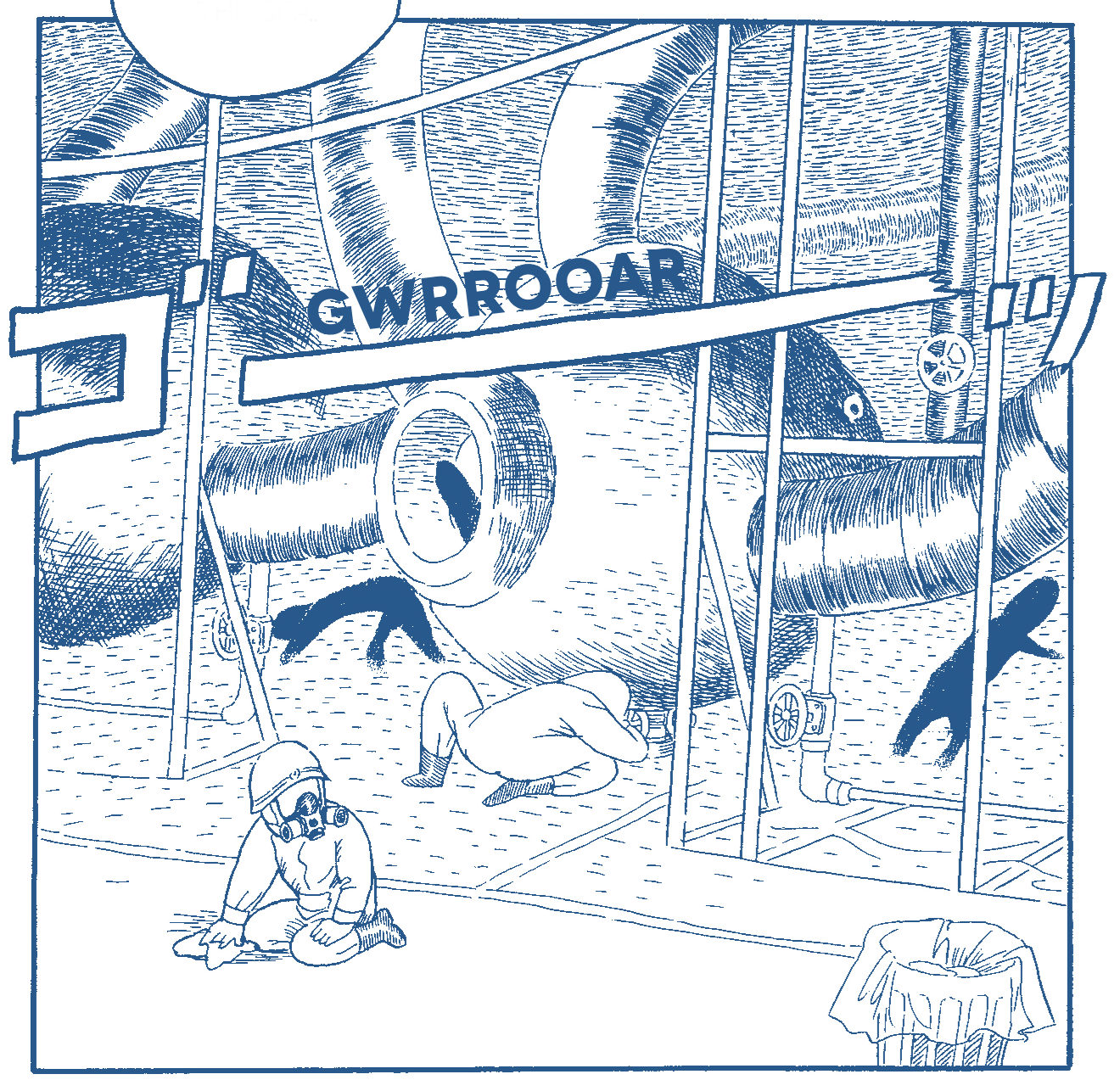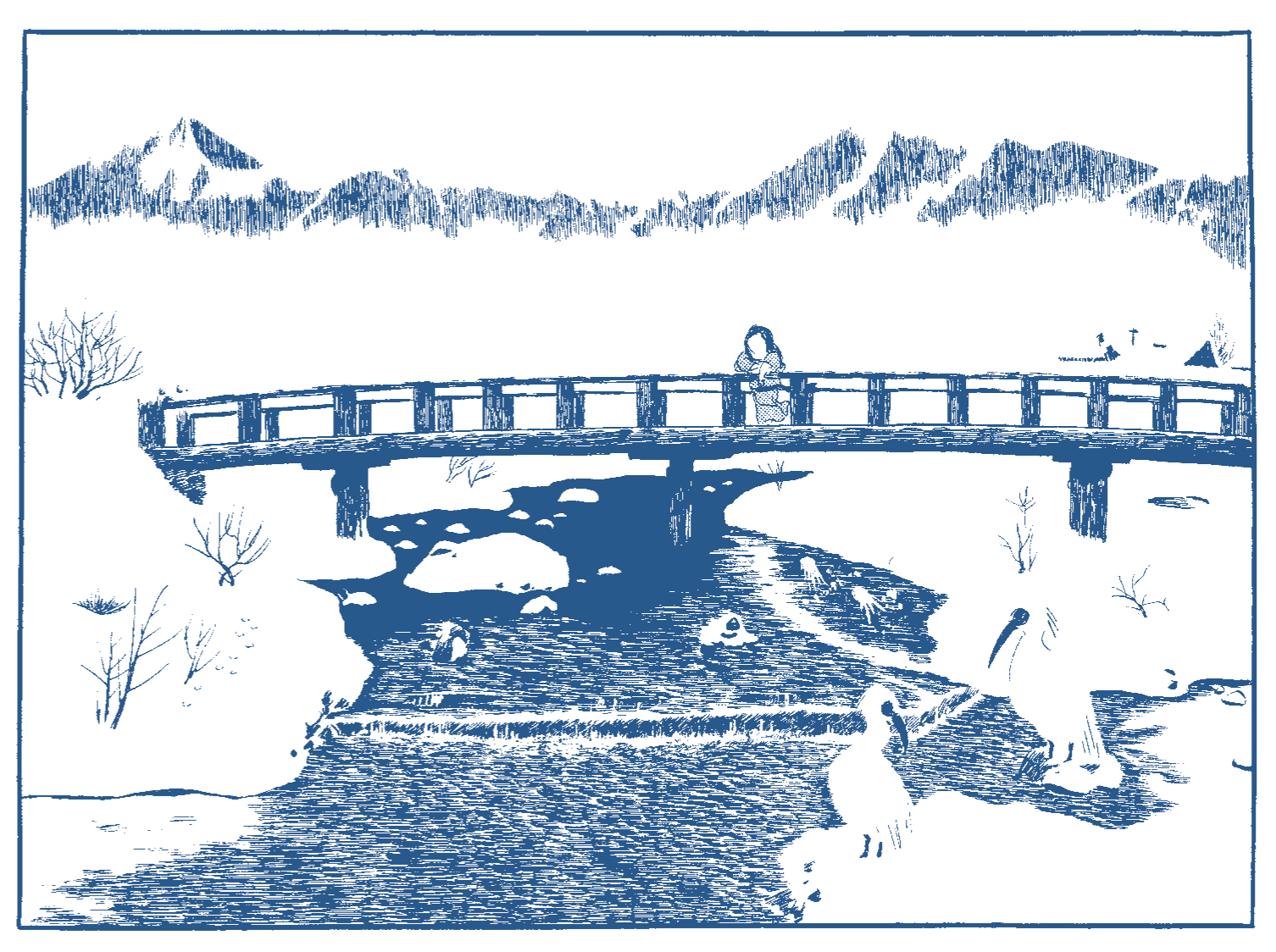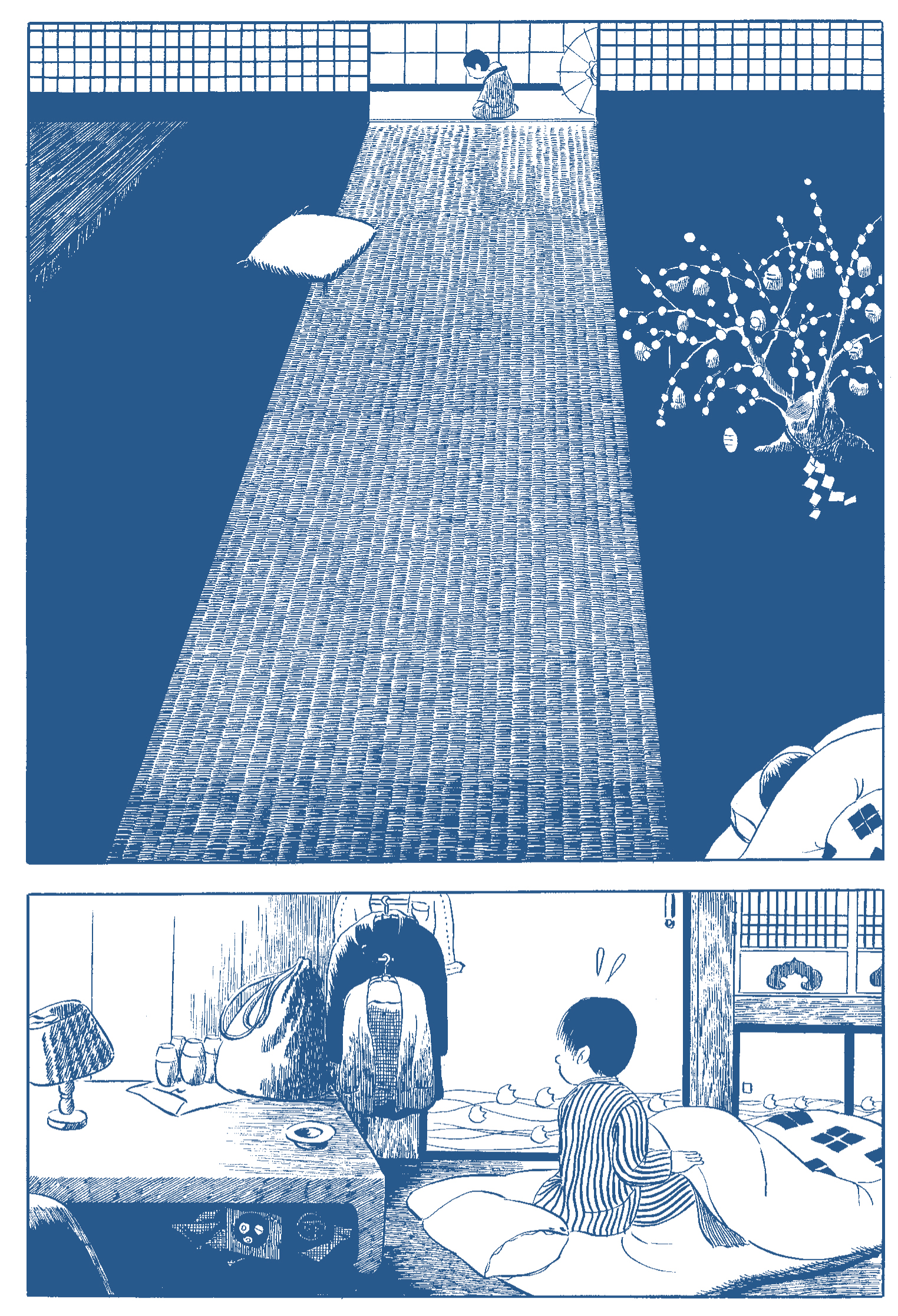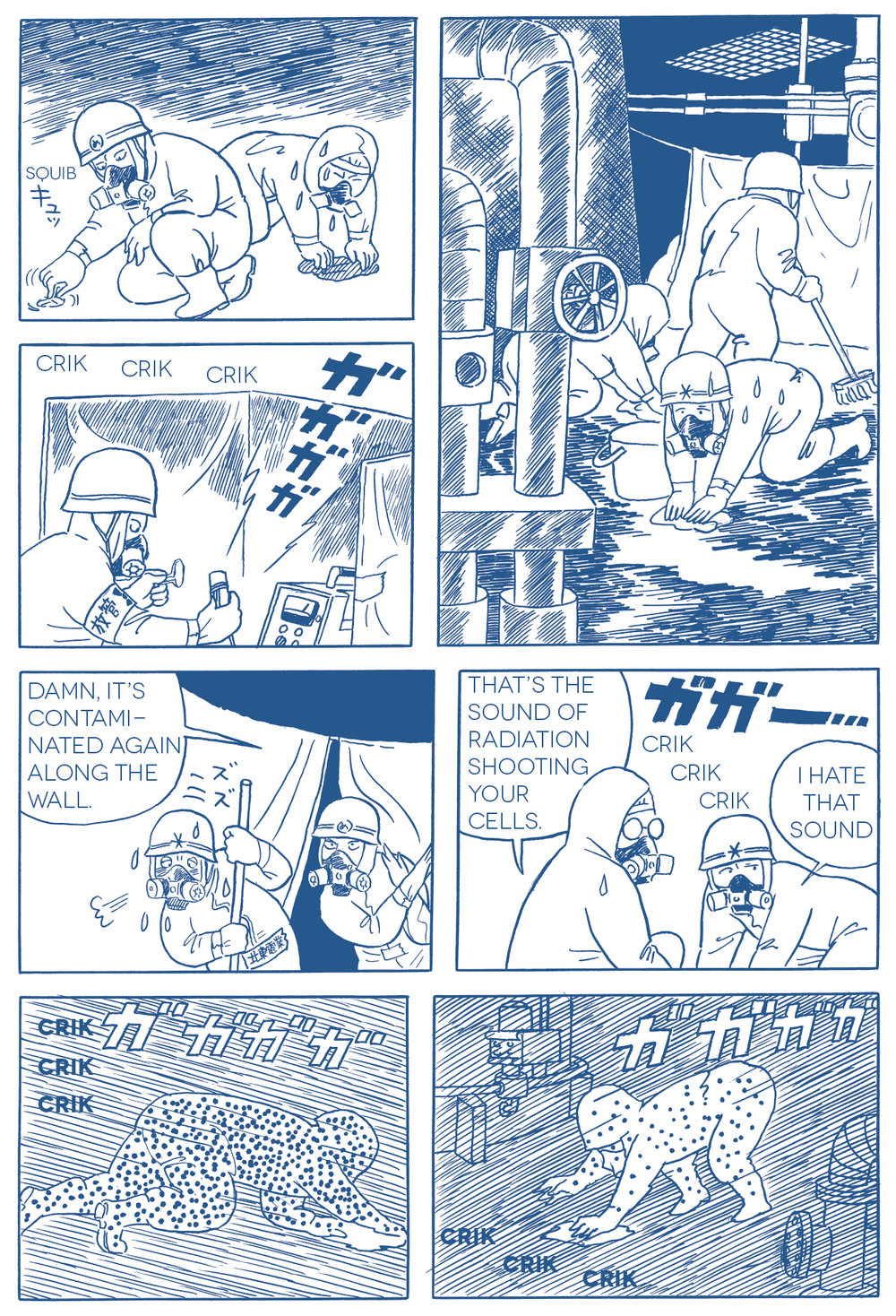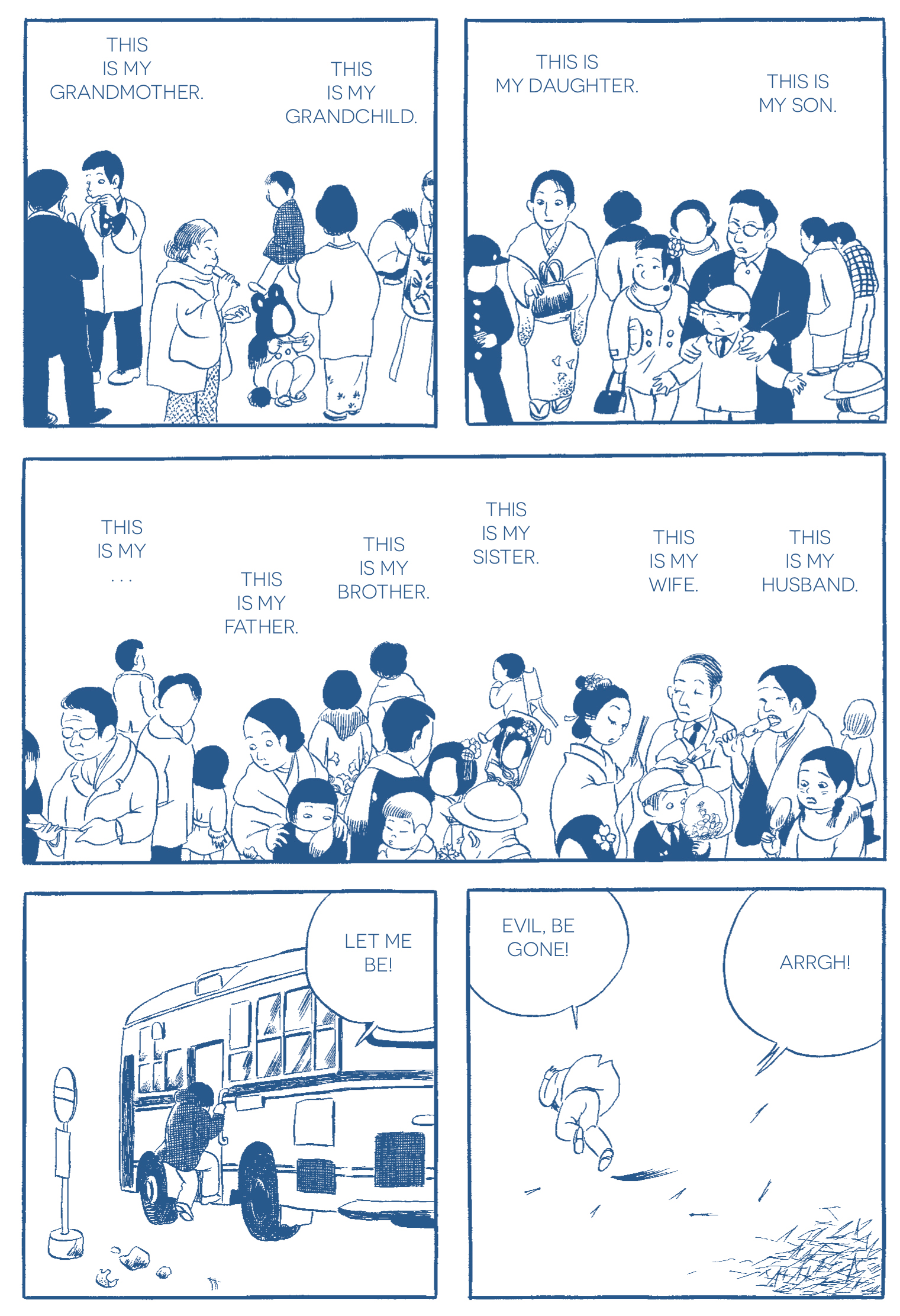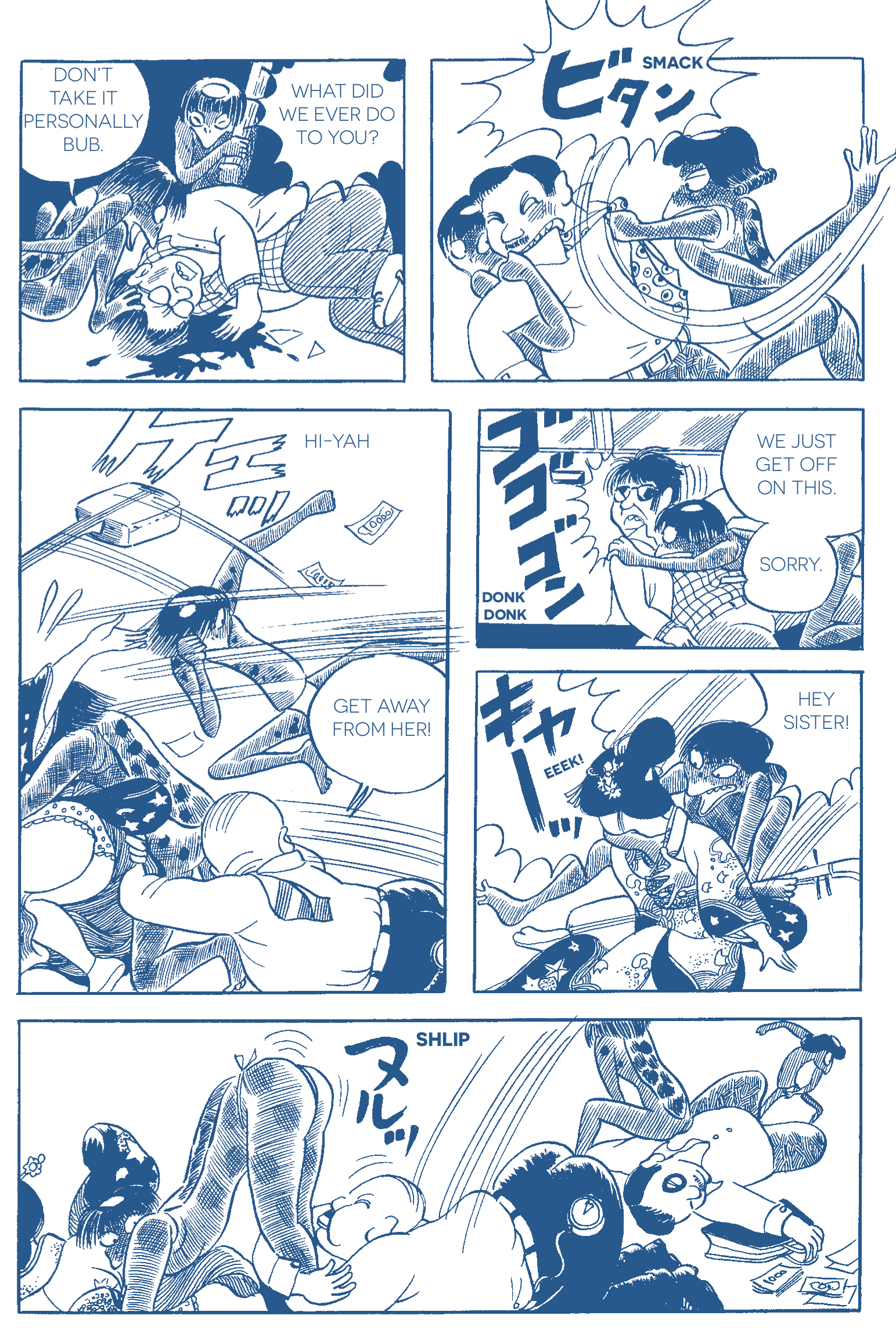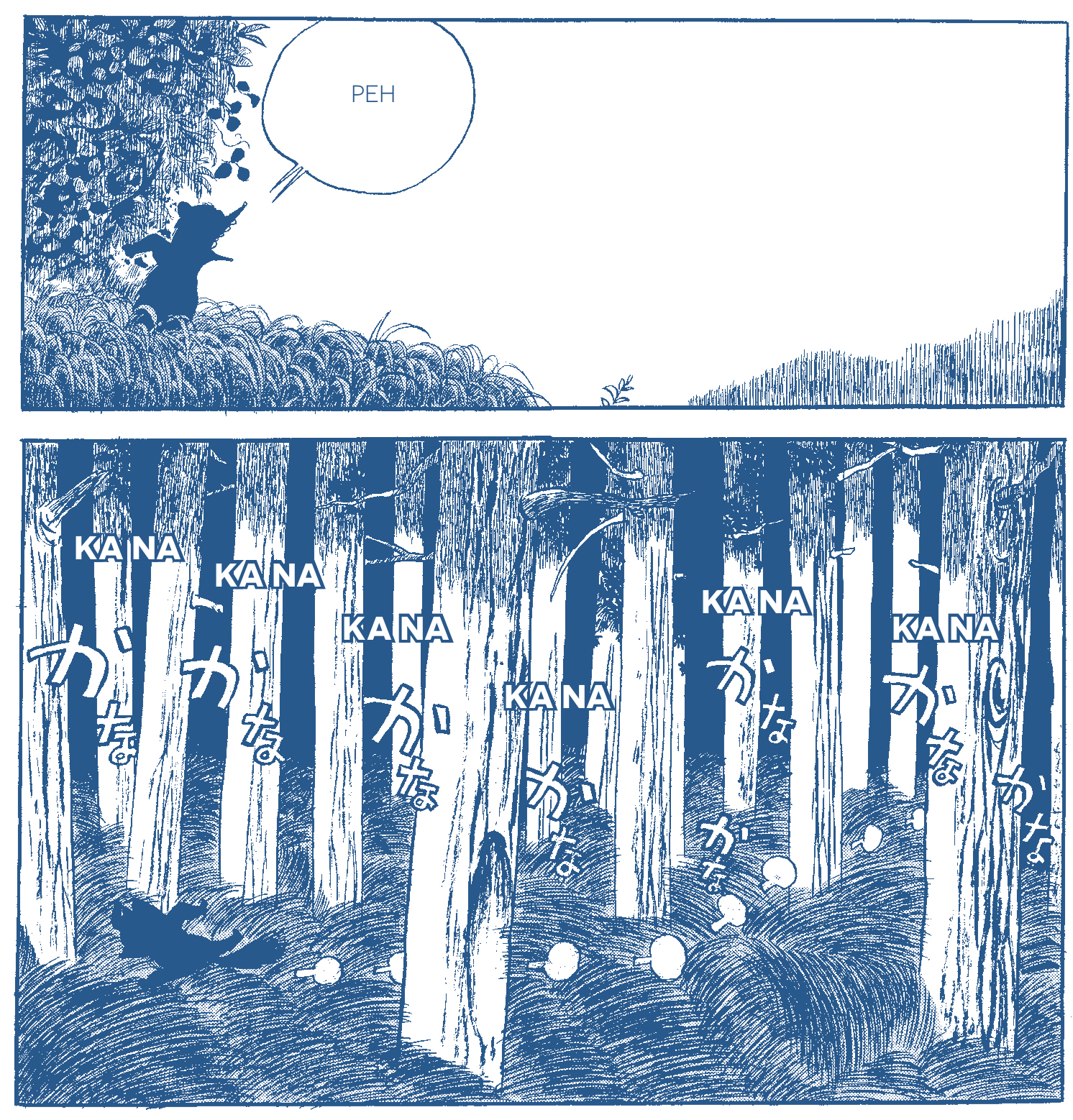Art changed in Japan after the tsunami and nuclear meltdowns of March 2011. So did art history—or at least it should have.
As the black waters of the tsunami receded from communities along the Pacific Ocean coast in northern Japan, and the fallout settled upon the nuclear boomtowns and farming villages of eastern Fukushima, social engagement flourished across the arts, both in fields where one would expect it (like documentary filmmaking) and in those traditionally allergic to sensitive issues (like contemporary art).
That the disasters ushered in a new era in Japanese culture is widely recognized. That they also inspired a reappraisal of what had been made in the past is only partially so. Within weeks, scholars, publishers, and activists began to offer an array of previous responses to industrialized fission in Japan. Inevitably, Hiroshima and Nagasaki were on people’s lips. While protesters cried, “No More Hiroshimas! No More Fukushimas!” pundits repeatedly asked, “How could the only country to suffer nuclear attack become one of the greatest supporters of atomic energy?” Classics of disaster fiction, like Sakyo Komatsu’s Japan Sinks (1973), about the archipelago breaking in half from a massive earthquake, and Katsuhiro Otomo’s sci-fi dystopia Akira (1982-1990), about psychokinetic superkids in a post-atomic holocaust Tokyo, were praised anew as prophetic.
Yet much of this retrospection ignored a basic fact: very few of Japan’s many disaster-fantasy masterpieces have anything to do with nuclear power plants, nor with the dangers of building a dense, highly industrialized society along the seismically hyperactive Pacific Rim. Pointing out that Godzilla (the child of atmospheric hydrogen bomb testing in the 1950s) stepped on a nuclear power plant in a movie from 1995 or philosophizing about how he razed Tokyo amid bureaucratic seizure in Shin Godzilla in 2016 hardly helps to clarify how more than fifty nuclear power plants and multiple reprocessing facilities came to be built across the Japanese archipelago, in many cases facing tectonic fissures out in the Pacific Ocean with a centuries-long reputation for creating titanic waves, and in some cases directly over fault lines. The Fukushima Daiichi plant and what its existence revealed about Japanese society in the past and future were being obscured by mushroom clouds.
While disasterism continues to hog the spotlight—see, for example, the large survey, Catastrophe and the Power of Art, to open at the Mori Art Museum in Tokyo in October—the events of 2011 also unearthed a great deal of culture grappling less sensationally with nuclear power in its various states and guises. The earliest examples date back to the early 1970s, soon after the first light-water reactors went online (Fukushima Daiichi began feeding the grid in 1971) and national news media took note of the determined protests against nuclear industrialization in the countryside. Spanning novels, comics, painting, and photography, this diverse body of art spoke less to tropes of horror and the sublime and more to the nuances of nuclear and industrial risk and the social upheavals caused by aggressive state-mandated industrialization in a country where agricultural and fishing communities once wielded substantial autonomy and cultural respect. It was a body of art whose representative images—angry fisherwomen with protest banners, shadowy reactor containments greedily occupying the shores of remote bays and coastlines, lawyers and activists pointing fingers in town halls, beleaguered nuclear janitors—could never hope to compete with the universally recognizable iconography of nuclear fear. Apocalypse may be a much easier sell than debates about risk or legally sanctioned dispossession. But it is still sad when intellectuals and the cultural elite resort to end-time clichés when something much more subtle and insidious has unfolded in their backyard.
As someone who spends most of his time writing about and translating old Japanese comics, the most interesting item in this excavated archive for me was Susumu Katsumata’s (1943-2007) many manga about nuclear risk and rural displacement from the 1970s and 1980s. I already knew Katsumata’s work through his contributions to the legendary alternative manga magazine Garo, where he debuted in 1966 as an author of witty strips dealing with changing social mores and the tumult on Japanese university campuses. I was familiar with the feisty, alienated folklore creatures in his multi-page stories for Garo and other venues beginning in 1969. I recognized his careful attention to details of rural life – crafted fictions of the northern Japanese landscape where he grew up in the 1950s, brought up to date with the shadow of depopulation that still harrows the Japanese countryside. Yet, as a young man whose heart throbbed for the gritty countercultural violence and cool avant-gardism that otherwise dominated Garo, I wrote off Katsumata as a sentimental pastoralist.
Advertisement
So when a collection of Katsumata’s ribald stories from the 1970s and 1980s, Red Snow, received the Japan Cartoonists Association Award (one of the industry’s highest honors) in 2006, I almost rolled my eyes. When I heard that the English edition (issued by Drawn & Quarterly in 2009) didn’t sell as well as the publisher had hoped, I wasn’t surprised. Of course Katsumata’s affection for Japanese rural life wouldn’t resonate with foreign readers, I thought. Of course his many overheated sexual metaphors (so typical of his genre of literary manga) didn’t work for North America’s graphic novel readers, an audience decidedly more diverse and progressive than the straight Japanese men for whom Katsumata mainly drew. Even today, when looking at Red Snow alongside the many nostalgic illustrations Katsumata produced in the 1980s, I don’t think my initial assessment was entirely unfair. But as much of my thinking about Japanese society changed after March 2011—I was living in Tokyo at the time—so did my appreciation of Katsumata’s work and the important function of critically-minded pastoralism in Japanese culture at large.
In October 2011, seven months after the tsunami and meltdowns, a second collection of the artist’s work was published in Japan, again to much acclaim. Titled Deep Sea Fish (Shinkaigyō), the volume reprinted stories that Katsumata drew in the 1980s about the disposable laborers who clean and maintain Japan’s nuclear power plants, as well as others he wrote in the 1970s dealing (sometimes indirectly) with the way industrialization had upended the Japanese countryside, creating a new class of alienated immigrants in the cities and a world of vanishing fables in the interior. This juxtaposition reflects the trajectory of the artist’s own life. He was born and raised in a farming village named Kahoku-cho, located on the Kitakami River just north of the major port city of Ishinomaki in northern Japan. Here, he spent his non-school hours reading comics and tending the family cows. After graduating high school in 1962, Katsumata moved to Tokyo to take up a job selling high-end laboratory equipment for a subsidiary of Hitachi. In 1965, he entered Tokyo University of Education, got a degree in physics, and began a master’s in nuclear physics, but quit in 1971 to focus full-time on cartooning.
The earliest stories in Deep Sea Fish, drawn during and immediately after this period, employ haunting scenography to express feelings of loneliness felt by many displaced rural youth. The later nuclear stories date from an era when Katsumata was actively contributing to Japan’s anti-nuclear movement with illustrations and satirical strips for progressive publishers on topics ranging from the negative biological effects of radiation and accidents at Three Mile Island and Chernobyl, to the dangers posed by heightened Cold War tensions in the Pacific Ocean and Japan Sea. For a cartoonist to have the academic credentials that Katsumata did (few had more than high school diplomas before the 1970s) was extremely rare; intimate knowledge of both nuclear science and the plight of Japan’s rural areas—two topics of acute importance today—was something that probably Katsumata alone could claim.
The general region where Katsumata is from is called Tohoku (literally, “the Northeast”). If, previously, I saw Katsumata’s country roots only as an explanation for why there are so many rice paddies, mooing cows, kappa (water sprites), and tanuki (trickster raccoon dogs) in his manga, with the events of 2011—which inundated coastal communities a stone’s throw from Katsumata’s hometown, and irradiated towns, forests, and farmland about 100 miles south—I then realized that I barely knew more of that region than the frames provided by lugubrious folklore classics like The Tales of Tono (1910) and stereotypes of Tohoku as poor and backward, prone to famines and the desperation they induce.
Deep Sea Fish, with its juxtapositions of familiar folklore characters and motifs with themes of displacement and nuclear industrialization, provided an elegiac window onto how the Tohoku region has struggled not only because it is more prone to natural calamities (including three major tsunamis since the late nineteenth century), but also because the land and its peoples have been subject to discrimination and exploitation by government and industrial powers in Tokyo since the advent of the modern era. Saddling Tohoku with the nation’s three largest nuclear complexes—the Fukushima Daiichi facility, the even bigger Kashiwazaki-Kariwa Nuclear Power Station in Niigata, and the behemoth fuel reprocessing and waste storage facility in Rokkasho in Aomori—is just one example. In other words, Deep Sea Fish revealed Katsumata’s personal geography and compromised pastoral landscape as a map to a better understanding of how the 2011 disaster was, above all, a disaster for northern Japan.
Advertisement
Like Red Snow, Deep Sea Fish was put together by Asakawa Mitsuhiro, an editor and scholar whose efforts have been essential to the popularization of older literary manga in Japan and around the world. A former editor at Garo and its successor Ax, Asakawa was the original editorial brains behind Yoshihiro Tatsumi’s A Drifting Life (2008), a New York Times-bestselling comics autobiography by a central figure in the establishment of the graphic novel in Japan. Asakawa is also spearheading the forthcoming collected works of Yoshiharu Tsuge, another giant in the world of literary manga (and a major influence on Katsumata), which, like A Drifting Life, will be published by Montreal’s Drawn & Quarterly. New York Review Comics, too, will be publishing a volume by Tsuge in 2019, The Man of No Talents (1985–1986), which was originally serialized in the same magazine, Comic Baku, for which Katsumata’s story “Deep Sea Fish” (1984) was drawn.
It is thanks to Asakawa’s Deep Sea Fish that Katsumata could potentially gain recognition as one of the crucial artists of the prehistory of the 2011 disasters. “Potentially” because, despite a spate of press soon after that book came out in Japan (urging the book into a second printing), few people, even comics critics who once raged about Fukushima Daiichi, talk about his manga today. Of course, this is part of a larger problem. For a few years after the meltdowns, veteran opponents of nuclear power and Tohoku’s exploitation were celebrated as sages. But as the country moved from recovery and heightened consciousness to reconstruction and forgetting, activists and local residents were left to fight Japan’s corporate and political establishment, as they always have, largely alone and in the courts.
If Japanese negligence is a problem, so is foreign ignorance. I thought it imperative to get Deep Sea Fish out in English mainly to combat the mushroom clouds, kneejerk radiophobia, and lazy Fukushima-Hiroshima equations that have shaped so much art and writing about Japan since 2011. Finally, this past spring, an English edition of Deep Sea Fish (which had previously appeared in French) was published by London’s Breakdown Press, under the new title of Fukushima Devil Fish. The retitling, derived from one of the collection’s stories, “Devil Fish (Octopus)” (1989), which is set at a fictional nuclear power plant in Soma, a town in Fukushima Prefecture thirty miles north of the crippled Daiichi facility, was primarily designed to get the book into the hands of people who were interested in the events of 2011 but oblivious to new releases in the world of comics. I am credited only as translator—but I’m a very hands-on translator, like serial strangler “hands-on,” with my primary occupation as an art historian threatening to throttle each new project by turning every explanatory blurb into a dissertation. The result this time was a book whose publication was delayed, embarrassingly, by nearly two years. If foreign ignorance is to blame for skewed perceptions of 2011, so is the professionally indoctrinated slowness of scholars.
Initially, the idea was a comprehensive collection of Katsumata’s stories about oppressed nuclear janitors and his many topical cartoon strips and illustrations (there are well over a hundred) for anti-nuke groups from the late 1970s to mid-1990s, supplemented by an essay by me narrating how the artist’s double background as a nuclear physics grad student in Tokyo in the late 1960s and an author of pastoral tales about life in the modernizing Japanese countryside provides a unique perspective on how Japan became a veritable “nuclear archipelago.” That essay morphed into a Godzilla-sized text that threatened to annihilate the publisher’s finances, so the project was split in two.
Breakdown Press’s Fukushima Devil Fish is a more-or-less straight translation of Asakawa’s Deep Sea Fish, with the original back matter (a pair of critical essays) supplemented by an autobiographical text Katsumata wrote in 1983 that poetically describes the Tohoku landscape of his youth. Meanwhile, I am busy turning that orphaned monster essay into a book-length manuscript that uses Katsumata’s life and career to narrate the rise of Japan’s nuclear industry and anti-nuclear power movement prior to the Fukushima Daiichi meltdowns in 2011, and the manifold ways in which cartoonists have been involved as both industry lackeys and critics. No basic history of even the Japanese nuclear industry and its opponents exists in English, which is surprising considering the vast literature on anti-nuclear weapons activism and culture (but also telling about how Hiroshima has blinkered historians for decades). No Nukes for Dinner: How One Japanese Cartoonist and His Countrymen Learned to Distrust the Atom – my book’s working title – aims to fill that gap while providing a cornucopia of visuals on the subject of nuclear risk and protest that should put the mushroom clouds in their rightful, subordinate place.
But for now, and probably for a couple of years, because I work at the speed of a beached sea slug, curious foreigners will have to satisfy themselves by reading between the lines of Fukushima Devil Fish.
Fukushima Devil Fish by Katsumata Susumu, edited by Asakawa Mitsuhiro and translated by Ryan Holmberg, is published by Breakdown Press.


